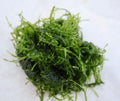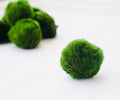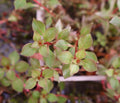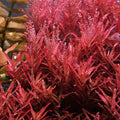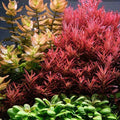Fundamentals of Aquascaping
The practice of aquascaping has grown in popularity recently. To create an environment that is visually pleasing to the eye, a variety of items, such as aquatic plants, stones, driftwood, and rocks, are set up, decorated, and arranged using techniques known as aquascaping, often known as "underwater gardening."
An Explanation of Aquascaping
Aquascaping requires time, commitment, and considerable research, just like any other interest. We will provide you with the knowledge you need to start the hobby of aquascaping, from laying out the fundamentals to outlining the components of an aquascape.
Aquascaping involves a considerably longer and probably more challenging path of development than simple gardening. We take delight in our aquariums once they are a permanent fixture in our homes. They show up in our everyday lives and make our deepest desires come true by giving us the tools to use our imagination and creativity in ways that turn into things we are passionate about.
Aquascaping includes design and layout components that go beyond the confines of the aquarium, in addition to the growing portion of aquatic horticulture, which involves physiology, pruning, ecology, and aquarium upkeep. It can be hard to find the right aquarium, but once you do, aquascaping can be hard work, but it can also be a lot of fun and give you a lot of satisfaction.
Fundamental Aquascaping Rules
The entire aquascaping procedure could appear challenging to complete, but if you adhere to a straightforward set of guidelines, it's not as challenging as it seems. As with any creative endeavor, aquascaping primarily depends on your creativity. The hardest to attain, but possible, is the ideal balance between effectively applying scientific concepts and creativity. Before thinking about beginning aquascaping, keep the following details in mind:
Simplicity
Taste is everything in aquascaping, and occasionally less is more. People are frequently inclined to include as many different plant species as they can, believing that doing so will guarantee wonderful aesthetic variety. However, the outcome is typically the opposite. Your aquascape can avoid becoming congested by remaining simple.
Variety
Using just one kind of plant is hardly the definition of simplicity. You don't want your aquascape to look uninteresting, even if you plan to develop a theme. Always keep in mind that aquascaping requires a lot of ingenuity!
Proportion
To achieve a sense of balance, try to have as much space in your tank as filled space. If you only use big leaf plants, the size and depth of your aquascape will be changed, which will make it look less appealing.
Persistence
Aquascaping can be frustrating, but the best method to determine which combinations of aquascaping designs and layouts are effective for you is through trial and error. Therefore, be prepared to disassemble and reassemble your aquascape if there is something you don't like about it. You will become more adept at it the more you experiment.
Aquascaping Basics
One of the most important elements of aquascaping equipment is lighting. The lighting is regarded as the beating heart of an aquarium because it has such a significant impact on the well-being and development of the aquascape plants.
Water Filters
Water filters do exactly what their name implies—they eliminate extra food, fish waste, harmful chemicals, and decomposing organic matter from the aquarium. Mechanical, biological, and chemical filtration are the three main types of water filtration, and most commercial water filters use a combination of two of them.
Liquid Fertilizers
Similar to how vitamins are good for the human body, fertilizers are essential for plant growth. There are two kinds of fertilizers you can use to keep the aquarium healthy: macronutrients and micronutrients, depending on the lighting and CO2 systems of the aquarium. To establish a suitable aquatic environment, they must both be dosed properly.
Carbon Dioxide (CO2)
Even though the CO2 systems are a little pricey, they are necessary for plant growth. Without carbon dioxide, plants cannot grow. Investing in a top-notch CO2 system enables aquascapers to grow their plants to their full potential if they are genuinely enthusiastic about the hobby and decide to pursue it as one.
Hardscape Components
Sometimes aquarium aesthetics cannot be maintained by plants alone. They appear to be just as unique when you add pebbles, wood, or gravel. You can unconventionally arrange them or you can stick to the layout rules. Driftwood and rocks are important hardscape components that guarantee the design and layout portion of the complete aquascaping procedure.
Substrate
Aquascaping plants take up nutrients through their roots and leaves, so choosing the right substrate is crucial. With the right substrate, your plants will grow well and be the right size, color, and stage of development for the plants you want to grow (small foreground plants, tall background plants, etc.).
If you want to be successful with aquascaping, you must learn the foundational techniques. You want your fish to feel comfortable, your plants to thrive to their full potential, and your tank to look good. You may accomplish all of that by abiding by a few straightforward mathematical rules.



